Tricyclic ring system or phenothiazines
| Home | | Medicinal Chemistry |Chapter: Medicinal Chemistry : Antihistamines
Antihistamines : H1-antagonists with classical structure : Tricyclic ring system or phenothiazines : 1. Promethazine HCl (Phenargen) 2. Trimeprazine (Temaril) 3. Methdilazine (Tacaryl HCl) - Synthesis and Drug Profile
SYNTHESIS AND DRUG PROFILE
H1-antagonists with classical structure
Tricyclic ring system or phenothiazines
1. Promethazine HCl (Phenargen)
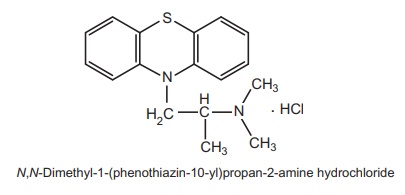
Synthesis
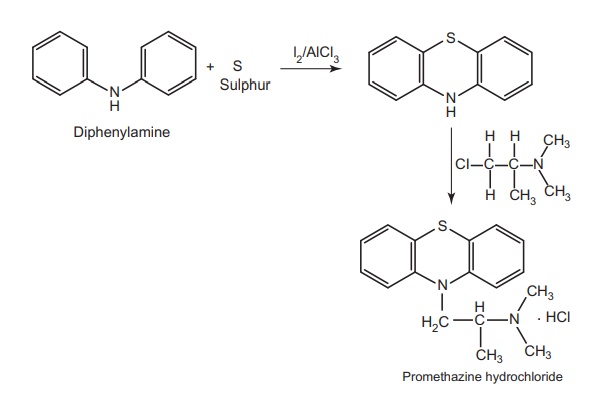
Properties and uses: Promethazine hydrochloride is a white or faintly
yellowish crystalline powder, highly soluble in water, soluble in alcohol and
in methylene chloride. It may be used effectively in perennial and seasonal
allergic rhinitis, vasomotor rhinitis, allergic conjunctivitis due to inhalant
allergens and foods, and certain milder type of skin manifestations of
urtricaria. It also possesses some anticholinergic, antiserotonergic, and
marked local anaesthetic properties.
Assay: Dissolve the sample in a mixture of 0.01 M hydrochloric acid and
alcohol and titrate against 0.1 M sodium hydroxide. Determine end point
potentiometrically.
Dose: Usual dose is 20–50 mg per day.
Dosage forms: Promethazine hydrochloride injection I.P., Promethazine
hydrochloride tablets I.P., B.P., Promethazine hydrochloride syrup I.P.,
Promethazine injection B.P., promethazine oral solution B.P.
2. Trimeprazine (Temaril)
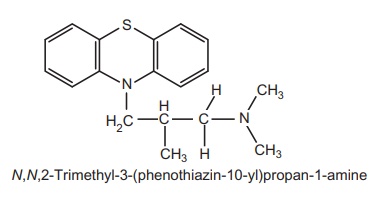
Synthesis
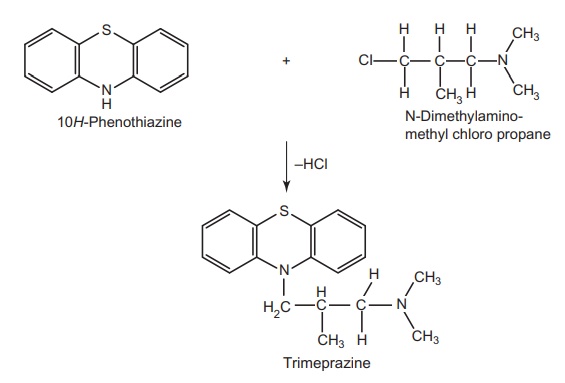
Properties and uses: It is a white crystalline powder, soluble in
water. It is used as histamine H1-receptor antagonist.
Dose: Usual dose for adults is 10–40 mg per day orally.
3. Methdilazine (Tacaryl HCl)
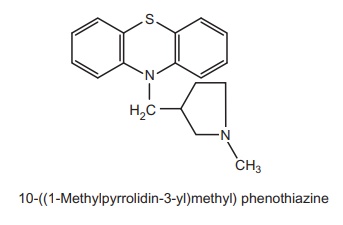
Synthesis
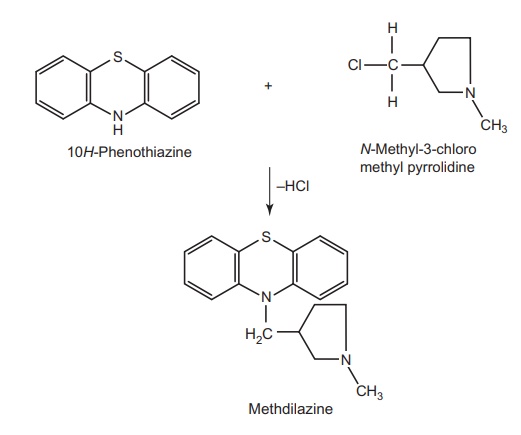
Properties and uses: It may be used for the symptomatic relief of
urtricaria. It has also been used successfully for the treatment of migraine
headache.
Dose: Usual dose for adults is 8 mg taken orally two to four times a day.
Related Topics
